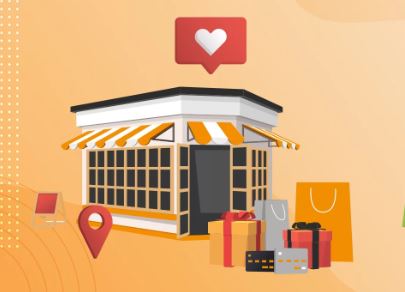A Step-by-Step Guide to Setting Up Your First Dropshipping Store
Starting a dropshipping business can be a great way to start selling online without worrying about storing products. In dropshipping, you sell products on your website, and a supplier handles the storage, packaging, and shipping. Here’s a simple guide to setting up your first dropshipping store, including the pros and cons to help you decide if it’s right for you.
# Step 1: Choose Your Niche
Pick a specific type of product to sell. This is your niche. Choose something you’re interested in and that has good demand.
- Research Trends: Use tools like Google Trends and Amazon Best Sellers to see what’s popular.
- Check Competition: Look at what your competitors are selling.
- Know Your Audience: Think about who will buy your products.
# Step 2: Do Market Research
Make sure your product idea is good by understanding the market.
- Keyword Research: Use tools like SEMrush to see what people are searching for.
- Look at Competitors: See what others are doing well and where they fall short.
- Ask Potential Customers: Use surveys to get feedback on what people want.
# Step 3: Find Reliable Suppliers
Your suppliers will send the products to your customers, so they need to be reliable.
- Supplier Directories: Use websites like AliExpress or SaleHoo to find suppliers.
- Check Reviews: Look at supplier reviews and order samples to test their products.
- Make Agreements: Set clear terms with your suppliers about shipping times and product quality.
# Step 4: Choose Your E-Commerce Platform
Pick a platform to build your online store.
- Shopify: Easy to use and has lots of features.
- WooCommerce: Good for those who use WordPress and want more customization.
- BigCommerce: Great for growing businesses with built-in features.
# Step 5: Set Up Your Online Store
Get your store ready to go live.
- Domain Name: Pick a memorable and relevant name for your store.
- Website Design: Use templates or hire a designer for a professional look.
- Create Essential Pages: Set up Home, About Us, Contact Us, and FAQs pages.
- Add Products: Upload high-quality images and detailed descriptions of your products.
# Step 6: Set Up Payment Gateways
Make sure customers can pay easily.
- Popular Payment Methods: Integrate PayPal, Stripe, and credit card options.
- Security: Ensure your payment process is secure to protect customer information.
# Step 7: Develop a Marketing Strategy
Plan how to attract customers to your store.
- SEO: Optimize your site to appear in search engines.
- Social Media: Promote your products on Facebook, Instagram, and Pinterest.
- Content Marketing: Write blogs or create videos about your niche to attract visitors.
- Email Marketing: Build an email list and send regular updates and promotions.
# Step 8: Launch Your Store
Get ready to open your store to the public.
- Soft Launch: Start with a small launch to test your store and fix any issues.
- Promotions: Run special offers to attract your first customers.
- Gather Feedback: Ask early customers for feedback to improve your store.
# Step 9: Manage Orders and Customer Service
Handle orders and provide good customer service.
- Order Management: Use automated systems to process orders and track shipments.
- Customer Support: Offer support through email, live chat, and phone.
- Returns and Refunds: Have clear policies for returns and refunds.
# Step 10: Monitor and Optimize
Keep improving your store by tracking its performance.
- Use Analytics: Tools like Google Analytics help you see how your store is doing.
- Watch Key Metrics: Look at traffic, conversion rates, and average order value.
- A/B Testing: Test different strategies to see what works best.
# Pros and Cons of Dropshipping
#### Pros
1. **Low Startup Costs:**
- **No Inventory Costs:** You don’t need to buy stock upfront.
- **Minimal Overhead:** You can run your store from anywhere.
2. **Easy to Start:**
- **Quick Setup:** Start your business quickly with little technical knowledge.
- **Flexible:** Test different products without much risk.
3. **Wide Product Range:**
- **Variety:** Offer many products without worrying about storage space.
4. **Scalable:**
- **Grow Easily:** Expand your business without needing more warehouse space.
#### Cons
1. **Low Margins:**
- **Thin Profits:** Competition can lower your profits.
- **High Marketing Costs:** You may need to spend more on advertising.
2. **Inventory Issues:**
- **Stock Availability:** Hard to keep track if suppliers run out of stock.
- **Supplier Reliability:** Depend on suppliers for product quality and shipping.
3. **Shipping Complexities:**
- **Long Shipping Times:** Many suppliers are overseas, causing delays.
- **Multiple Suppliers:** Coordinating shipping from different suppliers can be tricky.
4. **Customer Service Challenges:**
- **Limited Control:** You have less control over product quality and shipping.
- **Return and Refund Issues:** Handling returns can be complicated.
Conclusion
Setting up your first dropshipping store involves careful planning, research, and execution. By following this step-by-step guide and considering the pros and cons, you can create a successful dropshipping business that meets the needs of your target audience and stands out in the competitive e-commerce landscape. Remember, consistency and continuous improvement are key to long-term success. Happy dropshipping!




Post A Comment